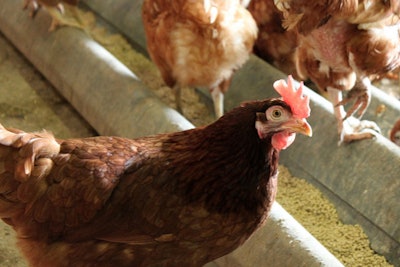
Selenium is arguably one of the most important, yet most forgotten and undervalued, trace minerals in nutrition, said Rob Shirley, Ph.D., senior nutritionist with Adisseo during the "Adisseo Effect of Different Selenium Sources on Egg Production and Selenium Deposition in Aged Laying Hens under Heat Stress" TECHTalk, part of the International Production & Processing Expo (IPPE) Marketplace.
Shirley explained that while selenium is very important, there are also many ways to look at it and how it impacts the animal.
In doing so, Shirley looked at how feeding selenium impacts a heat-stressed layer. The objective of the study was to determine the efficacy of Selisseo, a 100% pure source of hydroxy-selenomethionine (OH-SeMet), compared to a SelenoYeast and a sodium selenite when fed to laying hens at the age of 40 weeks to 71.
Shirley explained that the hypothesis was that "Selisseo does not affect laying hen performance when supplemented under heat stress conditions when compared to other organic and mineral forms of selenium."
The study included three treatments, 12 replicas per lot (10 cages per replicate lot) and 2 hens per cage, 20 hens per replicate lot. Per treatment there were 240 birds across the three treatments, resulting in 720 birds that were worked with. Hens were kept at a minimum of 85 degrees F and naturally ventilated.
Study results
Shirley said the study found that "selenium from Selisseo readily transferred into the body's general protein pool as selenium methionine, i.e., as a storage form, this means that higher selenium in the egg is possible, and if you're a consumer eating this, there is some extra nutritional benefit there, so some people may want to market that as a benefit within the egg that they're producing."
He further explained that from a metabolic standpoint, the liver contained a lot more selenium, which means that there are a lot more selena proteins there to help with managing oxidative stress.
"The high selenium deposition via Selisseo resulted in the hen being able to overcome the oxidative stress and production drag that coincide with heat stress. This meant more salable eggs and better feed conversion. When you link these two together, there are substantial economic returns possible when laying hens are fed Selisseo under heat stress," he said.

















